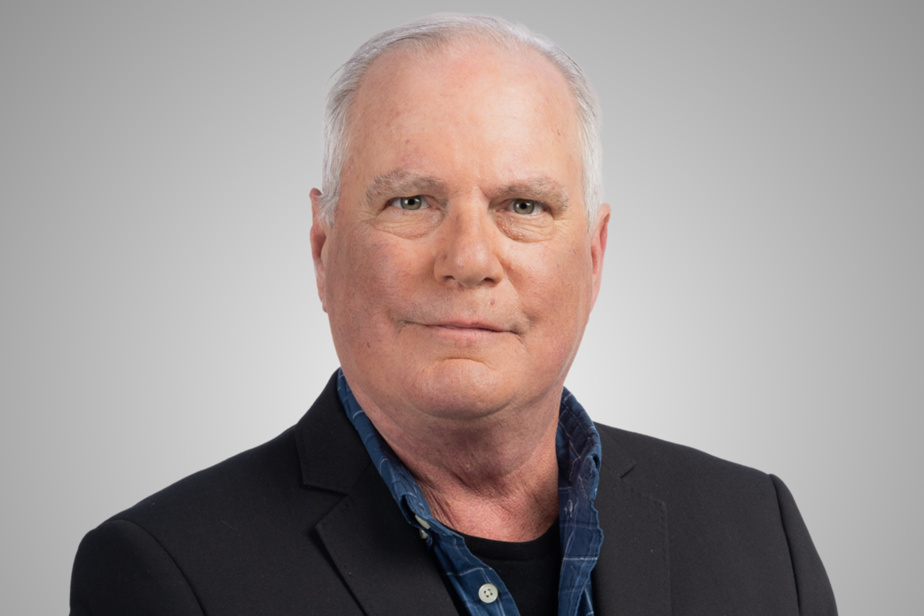(London) When you get off the plane at London Heathrow Airport with hand luggage, it will take you 25 minutes before you find yourself in a taxi ready to leave the terminal. Gone are the endless queues and chaos that we still experience in North American airports. At Heathrow, we are experiencing the airport of tomorrow today, thanks in part to a Quebec company.
Once you get off the plane and into the arrivals terminal, you simply swipe your passport through one of dozens of scanners that are available to the public without any human interaction required. I didn’t see any customs officers, and it took me about twenty minutes to find myself on the train platform.
“With biometrics, the airport can detect problem cases and intervene if necessary, and customs officers know where you are in the airport at all times. We designed and installed all this technology at Heathrow,” Ian Edwards, CEO of AtkinsRéalis, formerly SNC-Lavalin, explains to me with a broad smile.

PHOTO HUGO-SÉBASTIEN AUBERT, LA PRESSE ARCHIVES
Ian Edwards, CEO of AtkinsRéalis, last August
AtkinsRéalis is heavily involved in the aeronautics sector and it is involved on several fronts at once, to the point that the company has a large chalet in Farnborough, where it receives its clients and partners and even organizes events.
CEO Ian Edwards and his chief operating officer, Philip Hoare, explained to me on Wednesday their involvement in the aeronautics sector and the areas of expertise that the group has developed over the last 20 years, in Europe and North America.
The Montreal company has had a strong relationship with Airbus for 10 years, for whom it carries out structural analyses for its aircraft and has notably designed the wings of the A380, the European manufacturer’s giant aircraft.

PHOTO HUGO-SÉBASTIEN AUBERT, LA PRESSE ARCHIVES
Airbus A380 aircraft at Montreal-Trudeau Airport, June 2020
AtkinsRéalis also integrates and designs the engines of the various Airbus aircraft families when the aircraft manufacturer updates its models.
The group also carries out mandates in the military sector, where it works in collaboration with British Defense on several development projects. Today, the military component has taken over in terms of revenue compared to commercial aviation.
But AtkinsRéalis’s great expertise is that which the group has acquired over the years in airport infrastructure. The firm ranks among the three largest engineering groups in the world in the airport sector.
We design the physical infrastructure, we develop the security management systems, we are fully involved in all aspects of the operation, such as energy supply.
Philip Hoare, Head of Operations at AtkinsRéalis
“We are responsible for the engineering of 7 of the 10 largest airports in the world, including Hong Kong, Heathrow, JFK and Dubai. In Canada, we look after the airports of Montreal, Toronto and Vancouver,” adds Ian Edwards.
Preparing for the future through modeling
The AtkinsRéalis teams are currently working on the design of the airport of tomorrow, which will require significant structural changes such as the entire management of sustainable aviation fuels and renewable energy. This is a research project for now, but its implementation could be imminent.
How can we ensure the smooth flow of flights for electric planes and flying taxis that will park near airports to transport passengers to their places of work or residence?
We are working on the daily air traffic routine by making a master plan and using modeling. There will be no traffic lights or stop signs in the sky.
Philip Hoare, Head of Operations at AtkinsRéalis
“Traffic will be by altitude level, with areas reserved for landing on designated sites such as the roofs of buildings. This is science fiction that will become reality very quickly,” predicts Philip Hoare.
Indeed, on the Farnborough Air Show site and in the various pavilions, we see a number of futuristic devices on display, notably those developed by the Wisk company, which is investing a fortune in electric flying taxis with vertical take-off and landing and which are about to enter service, for real.
It will be necessary to integrate these devices, make them work in an organized system, anticipate new energy sources such as hydrogen in the daily management of airports…
As a partner of the Airports of Tomorrow initiative launched by the World Economic Forum, AtkinsRéalis hosted a panel with sustainable development specialists at its Farnborough chalet on Wednesday.

PHOTO CHRISTOPHER PIKE, ASSOCIATED PRESS ARCHIVES
Record rains paralyzed transport in Dubai last April.
Increasingly frequent extreme weather events – floods, extreme heat, drought, desertification, sandstorms, etc. – are having a severe impact on airport infrastructure around the world.
The most recent example was the one suffered by Dubai airport last April when torrential rain caused three feet of water to accumulate on the airport tarmac, causing significant damage and delays that impacted all global air traffic.
The airline industry must take drastic and expeditious measures to achieve the goal of carbon neutrality by 2050. If science fiction seems on the verge of coming true in the world of aviation, decarbonization seems to be a distant and nebulous objective.
